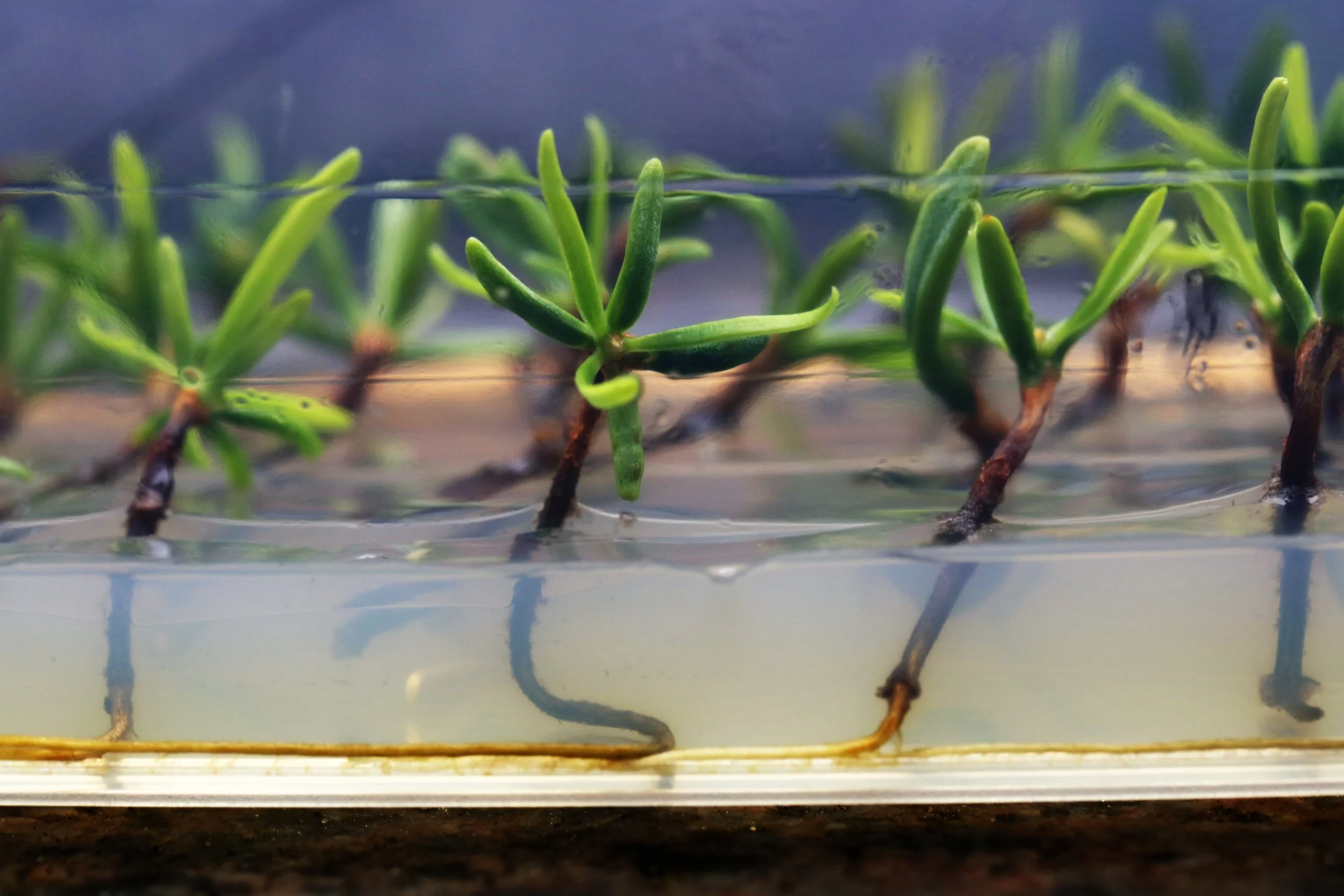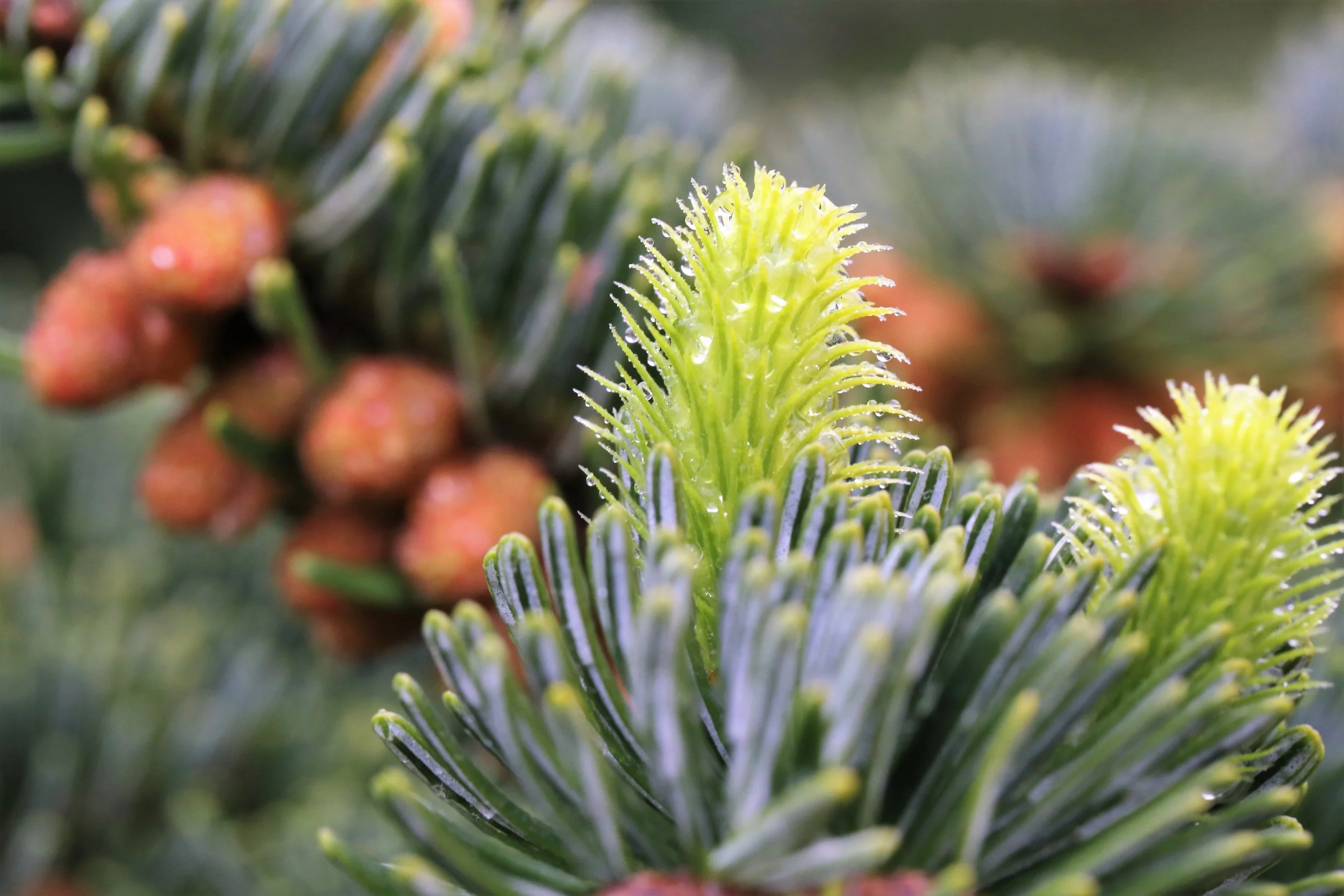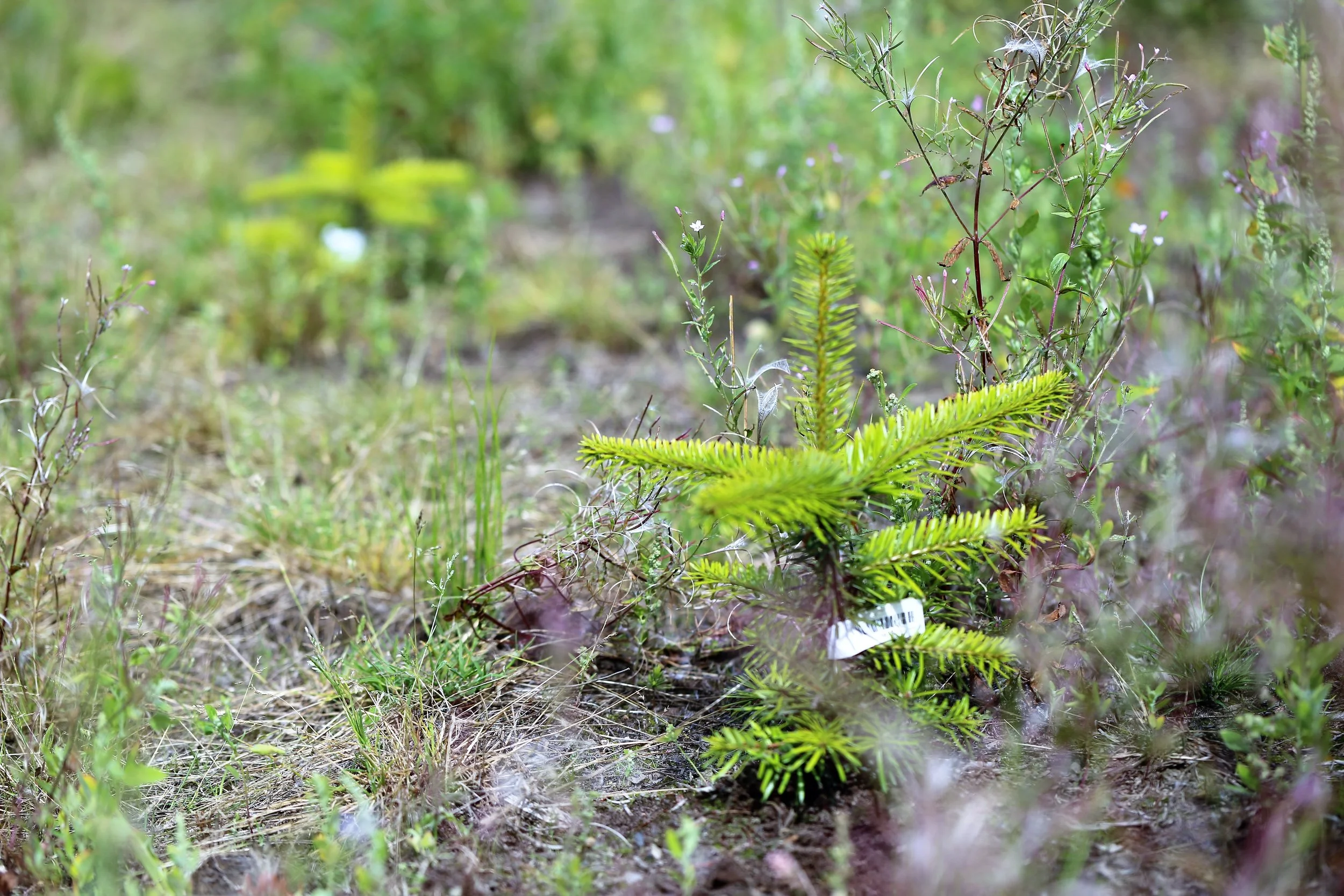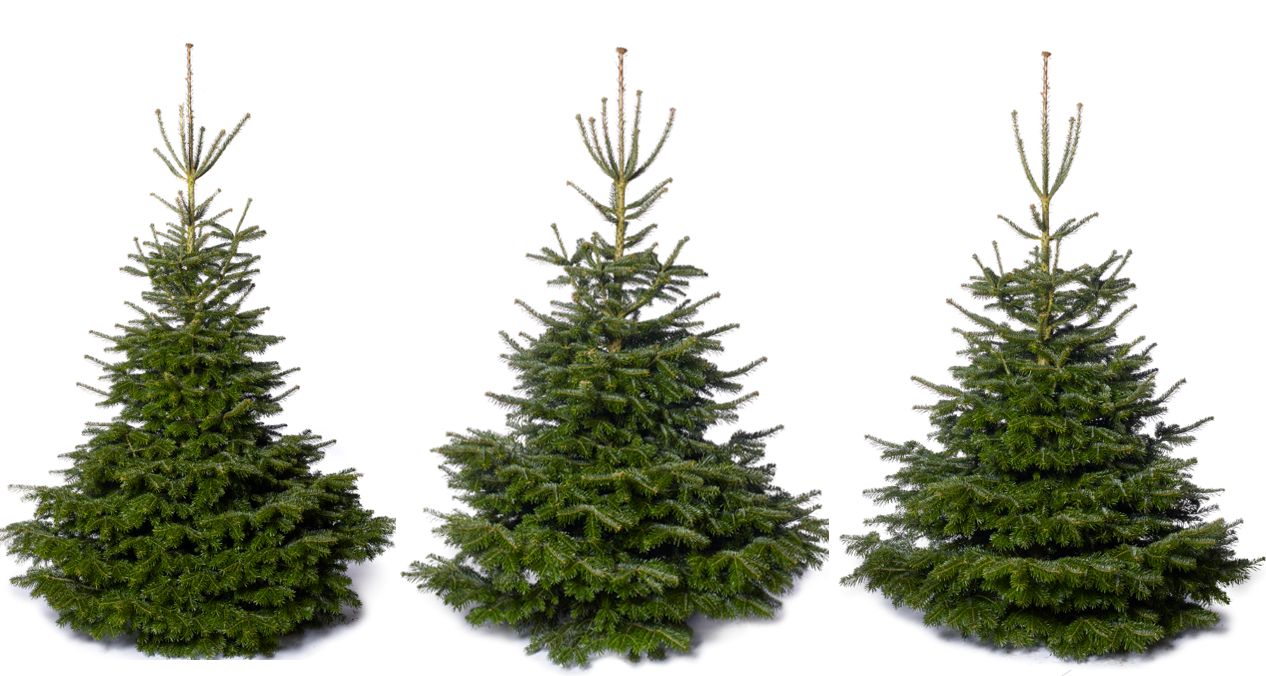
Nordmann seedlings rooting
Please slide the photos and be guided into the world of in vitro somatic embryogenesis produced seedlings from TECHTREE.
Small Nordmann fir seedlings rooting in agar. From this stage it's important to ensure the correct root development by keeping the seedlings at the right temperature and adding the specific nutrients needed

Female and male flowers together
Nordmann fir have both male and female flowers on the same tree. In the late spring they both blossom and the female flowers are pollinated mostly by the wind.
In the beginning the female flowers are bright green but during the summer they begin to put on red colors with bright green scales.

Male flowers
Male flowers growing into pollinators. The main pollination in true firs happens through wind, the temperature and climate conditions are paramount for a good pollination each year.
For this reason the succes of pollination can vary a lot from year to year producing either a good or a bad cone crop.

Pollinating
Male flowers pollinate in the late spring, the yellowish pollen is a beautiful sight when the bright rays of sunlight shines through clouds of pollen creating an almost unearthly feeling.
We collect this pollen to run controlled pollination in our seed orchards.

Nordmann fir female flowers turning into cones
Nordmann fir originates from the Caucasian mountains in Russia and Georgia. Nordmann fir is by far the most commonly species used as Christmas trees in Europe and the US market shows rising interest in this beautiful tree.
It is a true fir and therefore the cones are upright, in contrast to Picea or Pinus where the cones are hanging from the branches.

Nordmann fir cones
In the autumn the cones have developed and are ready for harvest. These are cones from selected 1.5 generation Nordmann fir seed orchards, and they are used as starting material for our somatic embryogenesis program.
After harvest they are treated at Levinsen & Abies seed facilities and then the DNA is extracted. From then on it gets technical...

Ready for harvest
These cones are ready for harvest. In the wild the cones will not fall off a true fir. Instead the cones will disintegrates so that each seed fall to the ground.
The window of harvest is a couple of weeks long and the cones are air dried and treated in a seed facility afterwards.

Plant tissue propagation
Plant tissue propagation is a natural way of producing identical plants from plant tissue thus replicating the mother plant.
At TECHTREE we use a process called somatic embryogenesis to produce identical twins from selected elite trees in True Firs (abies) used in Christmas tree production.

Several steps of somatic embryogenesis
Production of conifer somatic seedlings involves several steps: first induction of embryonal tissue then establishment and proliferation of embryonal lines in culture via periodic sub-culturing, from which large amounts of embryonal tissue can be produced.
And finally the maturation of somatic embryos via transfer of embryonal tissue onto medium and germination of mature somatic embryos and transfer of the resulting somatic seedlings into soil. The picture shows the first step.

Petri dishes
Petri dishes are used in the propagation program. After the extraction and the bioreactor cycle the plant tissue is grown in Petri dishes.

Seedlings striking roots
The seedlings go through different phases in their development process. Right now, its time for the tiny seedling to grow roots. Temperature control and nutrition are important factors at this stage.

Seedlings in agar
After extracting DNA from the seed and multiplying it using bioreactors, its time to grow the small new seedlings in a Petri dish in a controlled laboratory environment.
As with all other living creatures vitamins and food are important for the growth. We add different vitamins and sugars in our stock solutions.

In-vitro propagation
Somatic embryogenesis is better suited for mass propagation than rooting of adventitious or axillary shoots, so that is the method we use for propagating juvenile conifer material.

Identical twins
As the plant tissue derives from the same genetic material, all the small plants are in fact identical twins. This is the main reason for producing seedlings as the identical, elite seedlings have some very interesting commercial values: quality, equality, freedom from pests and so on.
Even at a very early stage the plants are identical with small variations primarily due to differences in biotic and abiotic microclimate between neighbouring clones.

Keep growing
We are almost at the stage where the seedlings can be handled and transferred to a nonsterile environment for further growth.
It is crucial that the seedlings have a well developed root system when they are handled and transferred.

Plugs
We use plugs in our breeding program. The pH level and composition of the growth medium is very important at this stage as well as watering and temperature control.
Furthermore we are developing a LED light system to enhance the growth reducing production time.

Small Christmas trees
The end product emerges as the seedlings are starting to look like small Christmas trees.
They have been transferred into a large pot and are getting ready to be transferred into the field where they will grow into saleable tree within 10 years.

Jens Iver Find
Jens was the inventor of developing somatic embryogenesis in Nordmann fir that has allowed us to initiate large-scale commercial production. He was also able to identify the value for the industry.
In the photo he is looking at a large 3 year old seedling in a greenhouse on the island of Fyn, Denmark - ready to grow into a superior Christmas tree.

Testing and experimenting
In addition to our technical research, our propagation program focuses on finding the ultimate seeds for our production. It is a long and complex process. We have approximately 15.000 clones in the ground for testing. The bar code helps us keep track of the different clones.

The business case
The commercial potential of growing Christmas tree seedlings using somatic embryogenesis methods is tremendous. Low quality plant material is the main concern of Christmas Tree growers Worldwide.
The use of TECHTREE plant seedlings will revolutionize the Christmas tree growing business within the next 10 years.

Nordmann fir
Nordmann fir is our most important species. The Nordmann fir has some very interesting qualities: the tree is exceptionel dark green, the needles are long, soft and lush and the after-harvest needle retention is among the best of all true firs.
Furthermore the tree will grow well in a number of different soils and climates.
We are also developing Turkish fir and Noble fir for Christmas tree production.

The harsh environment
When our seedlings are approximately 3 years old they are transferred to the field. They need to be sturdy as biotic and abiotic factors compete to kill off the young plant.
Having a good nutritional standard and a optimized root system helps the plant survive and thrive. We are working on producing seedlings to be used by organic growers because the challenges are even bigger in this setting.

At the nursery
Treetech works together with nurseries in Denmark. The production of a seedling begins in the lab and then moves to the greenhouse.
Before they are transferred to the natural environment they need to be strong and adapted to the competition from other plants, the sun, frost and other climate factors.
The plants are sold as plugs, plug+1 or plug+2 seedlings.

Experimental plot
Techtree has experimental plots on a variety of growing locations around Denmark, on different soil types from heavy clay to sandy soils.
The trees are monitored and scored for quality, growth, pest resistance, flushing, needle retention among other key factors.

Bare root or container plants?
At TECHTREE we aim to produce strong, beautiful and reasonably priced seedlings for the industry.
We supply both bare root plants and plug plants depending on your production set-up and machinery.

Natural grown identical twins
These are trees from the same seed. They can be considered identical twins as they are similar not only in appearance but also in other characteristics as flushing, needle retention, pest resistens and other important features.
Our breeding program is focused on all these aspects of the tree to ensure the best possible material for the producer.
The trees in the picture were 9 years from transplanting when the picture was taken and had reached a height of 235 cm. They are natural grown with no physical intervention. These trees can be replicated in unlimited numbers using the groundbreaking biotechnology methods of TECHTREE.
Somatic embryogenesis production


























